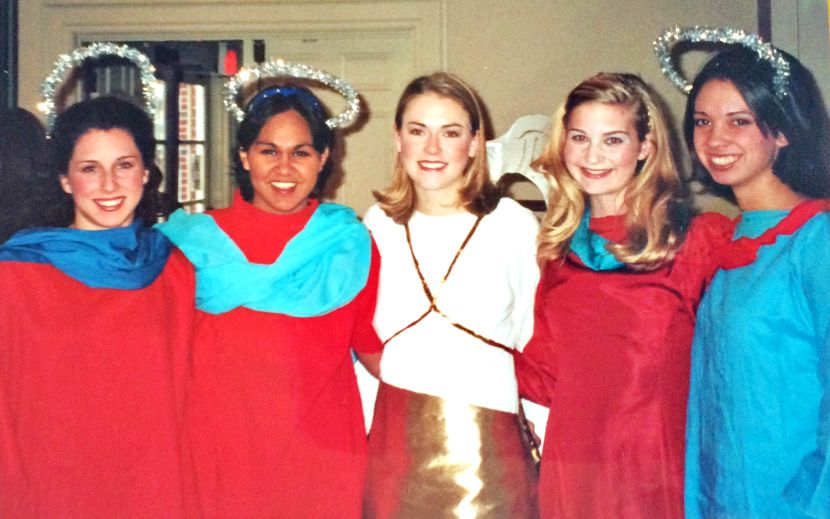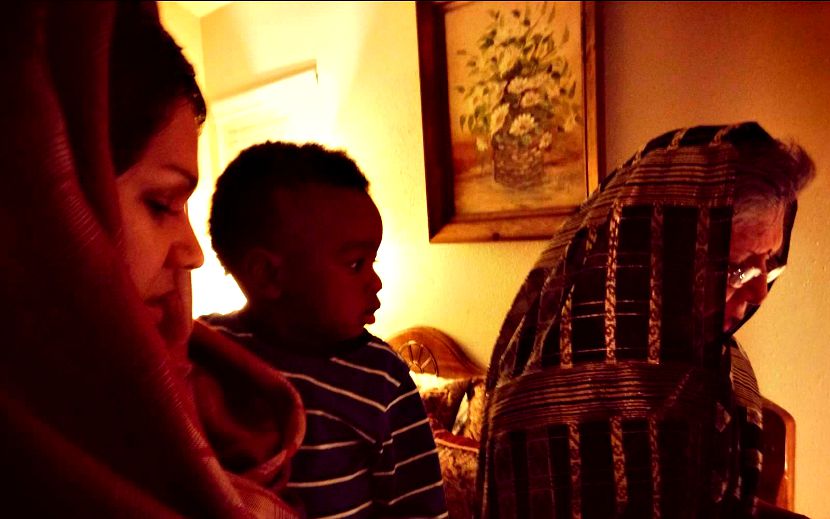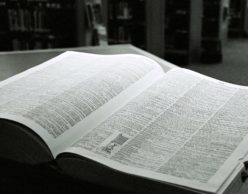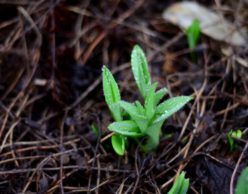Being Brown Mary

Being both: This is a core Mash-Up mantra. But sometimes, you don’t need to be both, whether it’s ethnicities, religions, or races. Sometimes, unexpectedly, it’s being wholly one that frees you to honor the myriad cultures in your mash-up life. Read our Indian-American Mash-Up Nishta Mehra‘s wonderful meditation on how embracing her Hinduism allowed her to open herself up to many faiths. And yes: her journey involved being a brown Hindu girl dressed up as the Virgin Mary at Christmas, no big deal.
I was born into Hinduism and raised in the Episcopal Church. That’s an “and,” not a “but.” Though I grew up in both traditions, neither side of the spiritual equation of my youth indicated my component parts were contradictory. While I wasn’t always sure how to be both, no one ever told me I couldn’t be.
My parents came to this country in the late 1960s, just after they were married in India. Like so many immigrants, they came to America seeking an education and a set of opportunities they hoped would come along with an American degree. They found more than they had bargained for: a culture that felt more like home than their own.
They were both deeply troubled by India’s deep-seated, staggering social inequality, which in large part persisted due to Hinduism’s ideological caste system. “It’s not that there aren’t problems in America, too,” my dad always said. “But people are upset about those problems in a way that is missing in India. People are trying to change things.” For her part, my mom cherished the independence she was allowed in America — again, not perfect, but better than the life she felt waited for her in India, where her in-laws watched her every move and acquaintances disapproved of the fact that my father had “let” her continue working after they were married. America was a place with values that matched their own, so when I arrived on the scene in 1982, they applied to be citizens.

I never detected in my parents the wariness of American culture that other immigrant moms and dads had. They were protective, yes, and stereotypically Asian in some ways (piano! good grades! early curfew!), but there was no underlying fear. There was no “What is America going to do to our daughter?” because “Our daughter is an American.”
So, when it came to where to send their American daughter to school, they looked at the ones with the best academic reputations, and from there picked the one with the most diverse student body. That’s how I became a St. Mary’s girl.
St. Mary’s Episcopal School, founded in 1847, was my home for twelve years. There was Bible class in third grade, with felt-board pictures of a kindly Jesus with his beard and his miracles, daily chapel from grades five through twelve, with hymns that I still crave and sing, and a Comparative Religions class my junior year that would lead to my undergraduate religious studies major.
Though my parents were both raised Hindu and were firmly committed that I be brought up in the traditions and rituals they held sacred, they saw no issue with my being steeped in another faith at school. My mom herself was a product of and a teacher in the Catholic parochial school system in India. (She taught me to sing “We Three Kings” in Hindi when I was little.) And while my dad grew up devoutly Hindu, he also grew up in Amritsar, the birthplace of the Sikh religion and location of its holiest shrine, the Golden Temple. So, in a sense, my parents were raising me much in the same way they had been raised themselves, with an openness to and a respect for other religious traditions.
This attitude is not novel to my parents; anyone who’s been to India can tell you that the country as a whole has an attitude toward religion that’s essentially incomparable to anything in the West. Religion is the air India breathes, and its religious traditions, which include Hinduism, Islam, Buddhism, Jainism, Sikihism, Christianity, and Judaism, for the most part coexist pretty peacefully. And Hinduism itself (while we have our share of crazies who feel otherwise — hey, Modi!) is a fairly large umbrella; there’s a lot of room underneath. As a religion, it’s done a fine job of melding with various other traditions that have come its way, which means that there are lots of different ways of “being a Hindu.”
I went through phases when Christianity seemed so much cooler than my own religion.
Still, I had my fair share of internal angst about my place in the scheme of things — should I join in the prayers during chapel, even the ones that said “in Jesus’ name?” Should I hide or show off on the days that I was fasting for my religious holidays? I went through phases when Christianity seemed so much cooler than my own religion, simply because it was the norm: all of the girls and their crosses, talking about what they did over the weekend with their youth groups, walking up to the altar to take communion while I stayed behind. I was both fascinated and confused by Jesus, who watched, larger than life, from a giant tapestry at the back of the church where we had chapel. I felt drawn to him, but was keenly aware he wasn’t mine. I still feel that way.
At times, I felt the weight of my otherness like an unfashionable, hand-me-down coat, like it would just be so much easier if I believed what my friends did. But I didn’t. So, I would swing the pendulum the other way, wearing my Hinduism like a badge of awesome otherness: The clothes! The bindis! The food! The mehndi! I made a show of being different, flaunted the “fun” parts of it, in an attempt to take control of the attention I was bound to receive either way.
Eventually, it was completely non-religious factors that helped me fully own my Mash-Up identity: my first set of badass friends who loved me for who I was, teachers who saw and nurtured my deeply geeky interests, and traveling and reading and learning about a broader world. For this, I must credit my wonderful alma mater. St. Mary’s never pushed or pressured me to be anything other than what I was: a Hindu girl who went to an Episcopal school. I was asked to speak in chapel and share about my faith, after which I had a wonderfully deep and respectful theological conversation with a classmate over AIM, late into the night. My senior-year Humanities teacher re-scheduled our class’ “Silk Road Festival” because the date coincided with Diwali, and my parents invited my teacher, her husband, and my classmates to share the holiday with us at home.
All of this made it possible for me to feel like I could be myself without having to put my guard up, either at home or at school. Being Hindu actually opened me up to not having to be dogmatic about Hinduism.
My senior year, I was voted by classmates to be one of six “Marys” in the school’s annual Christmas pageant — the first, but not the last, not-white, not-Jewish-or-Christian girl to do so. We called me “Brown Mary,” and the day of the pageant remains one of the most spiritually potent experiences of my life. I had been sick as a dog in the days leading up to the pageant, and I fought with the doctor at the critical care clinic so that he would give me permission to go back to school. My fever had to break, he said, and if it did, I could go. (He was really puzzled as to why a high school senior was so eager to be released to go BACK to school, instead of getting a note excusing her FROM school.)
I spent the morning of the pageant in my bed, wrapped in blankets and shivering, begging my body to be well. Down the hall, my mom performed her daily puja and I could hear her strong voice singing the Sanskrit hymns I had grown up with. I sang with her from my bed, desperate for whatever Divine Female powers there might be — Durga, Mary, whoever — to offer me their strength. Then, an hour before the “cut-off” window for school attendance necessary to participate in the pageant, my fever broke.
Being Hindu opened me up to not having to be dogmatic about Hinduism.
When we arrived at school, my wonderful classmates welcomed me with the generosity and grace that so characterizes my experience as a visitor inside Christianity. They did my makeup, fixed my hair, drove off to get me soup, snuck ginger ale up on the altar for me to drink as we waited to take our turns inside the Living Nativity. As the younger girls stood on either sides of me singing “Glooooooooria in Excelsis Deo,” their little bodies stopping to take a breath in the middle of all of those “o”s, I felt the same kind of transcendence I had experienced before in Hinduism, breathing in the space where boundary lines blur and we are given a window into the beyond of our own human experience.
I sat under hot lights, caked in too much make-up, hopped up on steroids, dressed like an unwed mother from the first century, and had a profound religious experience. It was all completely ridiculous and nonsensical, but it totally worked. Sort of like my life as an Episcopal-Hindu Mash-Up.
Now that I’m a parent myself, with a super-Mash-y son, I’m so grateful to my parents and my school for the space they gave me, and to my Hinduism for allowing me to stretch spiritually. There’s no manual for raising a Black son with two moms, one Hindu, one agnostic, with a grandmother (my mom) who taught him to take aarti after puja, and a grandfather (Jill’s dad) who taught him to say “Bless this food in Jesus’ name, Amen” at meal time. What’s more, I now teach at a Jewish school, and its influence means that my kid celebrates Shabbat and can identify a loaf of challah at a distance, by name.

As far as religious education is concerned, we’re making it up as we go. So far, Shiv does what you’d expect a curious kid to do — he wants to participate in everything, and he has a lot of questions. He sees my mom do her daily prayers in her home altar and wants to “help”; he’s begun to join in when we sing our prayers on Hindu holidays, with his own mish-mash imitation of the Sanskrit words. He knows that we observe the Sabbath on Friday, which means no leaving the house, no videos, and a family dinner, just the three of us. He’s beginning to pick up bits and pieces of the Shabbat brachot in Hebrew. He has questions about the Shiva statue in the front of our home, and about Ganesh, his elephant-headed son. He is curious, too, about Jesus: Who is he and where is he and is he God?
They’re great questions. And this Brown Mary can’t wait to explore them — all of them — with him.
Being both is hard, and completely worth it. Check out these stories:
Saying Grace: Staying True to Who You Both Are
No Box Unchecked: How We Became A Family





